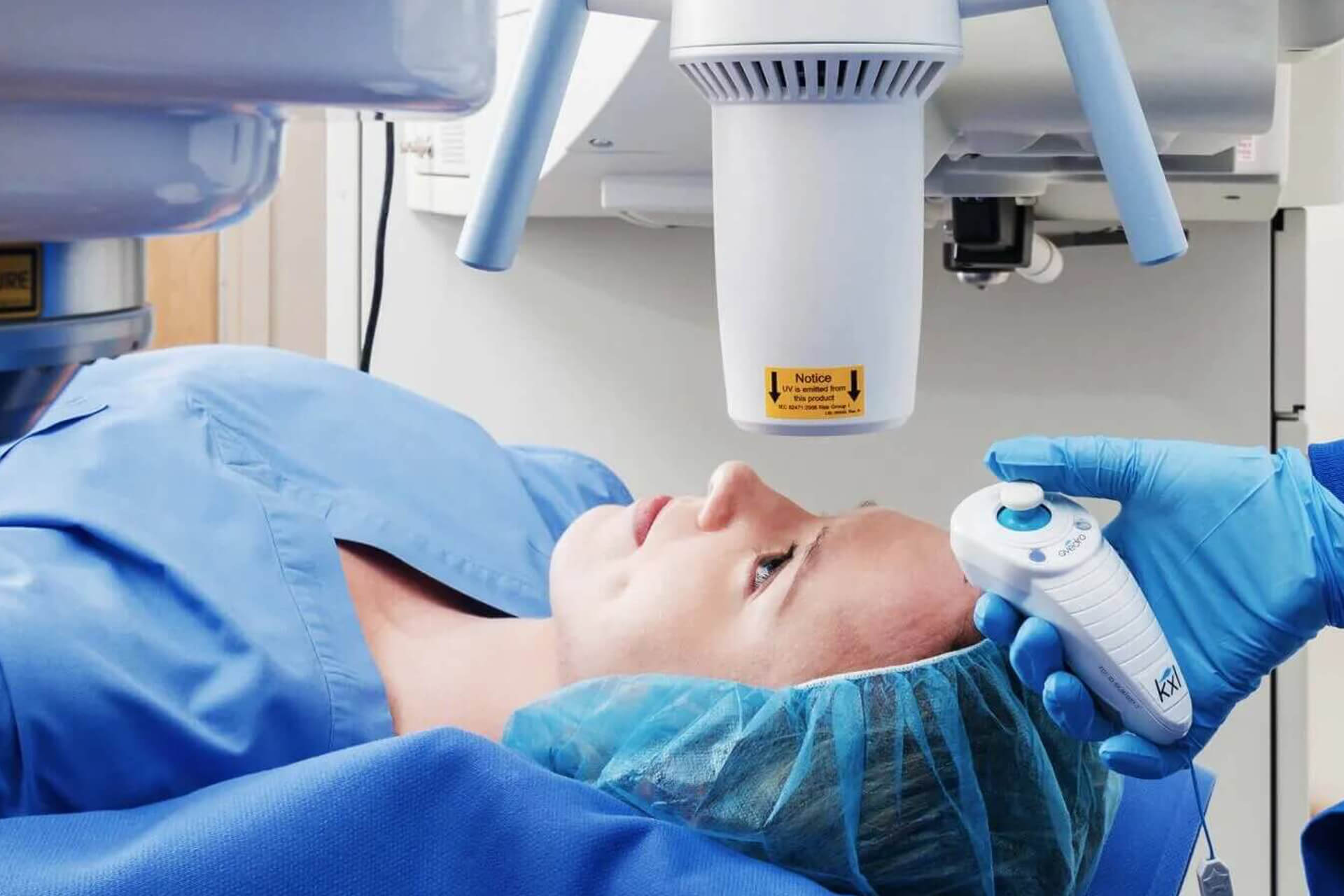


Cross-linking is a minimally invasive outpatient procedure for the treatment of progressive keratoconus. iLink FDA-approved cross-linking combines the use of prescription eye drops, Photrexa® Viscous (riboflavin 5’-phosphate in 20% dextran ophthalmic solution), Photrexa® (riboflavin 5’-phosphate ophthalmic solution), and ultra-violet A (UVA) light from the KXL® system to create new collagen cross-links and leads to the stiffening of the cornea. The goal of the procedure is to stiffen the cornea to slow or prevent further progression of the condition and preserve your vision.

Keratoconus changes your vision in two ways:
As the cornea changes shape from a ball to a cone, the smooth surface becomes wavy.
This is called irregular astigmatism.
As the front expands, your vision becomes more nearsighted. That means you can see objects clearly only when they’re up close. Anything too far away looks like a blur.
An eye doctor may spot the signs during an eye exam.
You should also mention symptoms like:
You’ll probably start with new glasses. If you have a mild case, new eyeglasses should clear things up. If they don't, your doctor will suggest contact lenses. Rigid gas permeable contacts are usually the first choice.
Over time, you may need other treatments to strengthen your cornea and improve your sight.
Our Office features a treatment called Cornea Collagen Crosslinking may stop the condition from getting worse. Or your doctor could implant a ring called an Intacs under the cornea’s surface to flatten the cone shape and improve vision. Corneal collagen cross-linking or CXL uses riboflavin drops combined with UVA light to strengthen the cornea. The procedure is designed to stop further progression of corneal ectasia (or thinning), which is typically seen in patients with keratoconus and in patients who have had LASIK or RK eye surgery.
When other treatments don’t give you good vision, the last resort is a cornea transplant.
This is a very safe operation, and it’s successful in more than 90% of cases. The doctor will remove the center of your cornea, replace it with one from a donor, and stitch the new one into place. You may need contact lenses afterward.

It's easy to schedule your eye exam at Remagin. Just request your appointment online or call us today at (407) 704-3937. If you live in West Orlando, Windermere, or the surrounding area, and suffering from keratoconus, help is available. Dr. Raja will answer any questions you may have and provide the treatment you need for effective relief.
Book Appointment TodayInsurance coverage for iLink FDA-approved cross-linking is now widely available. Greater than 95% of the commercially insured population has access to this potentially sight-protecting treatment. For additional information on insurance coverage for the iLink cross-linking procedure, click link below...
call today